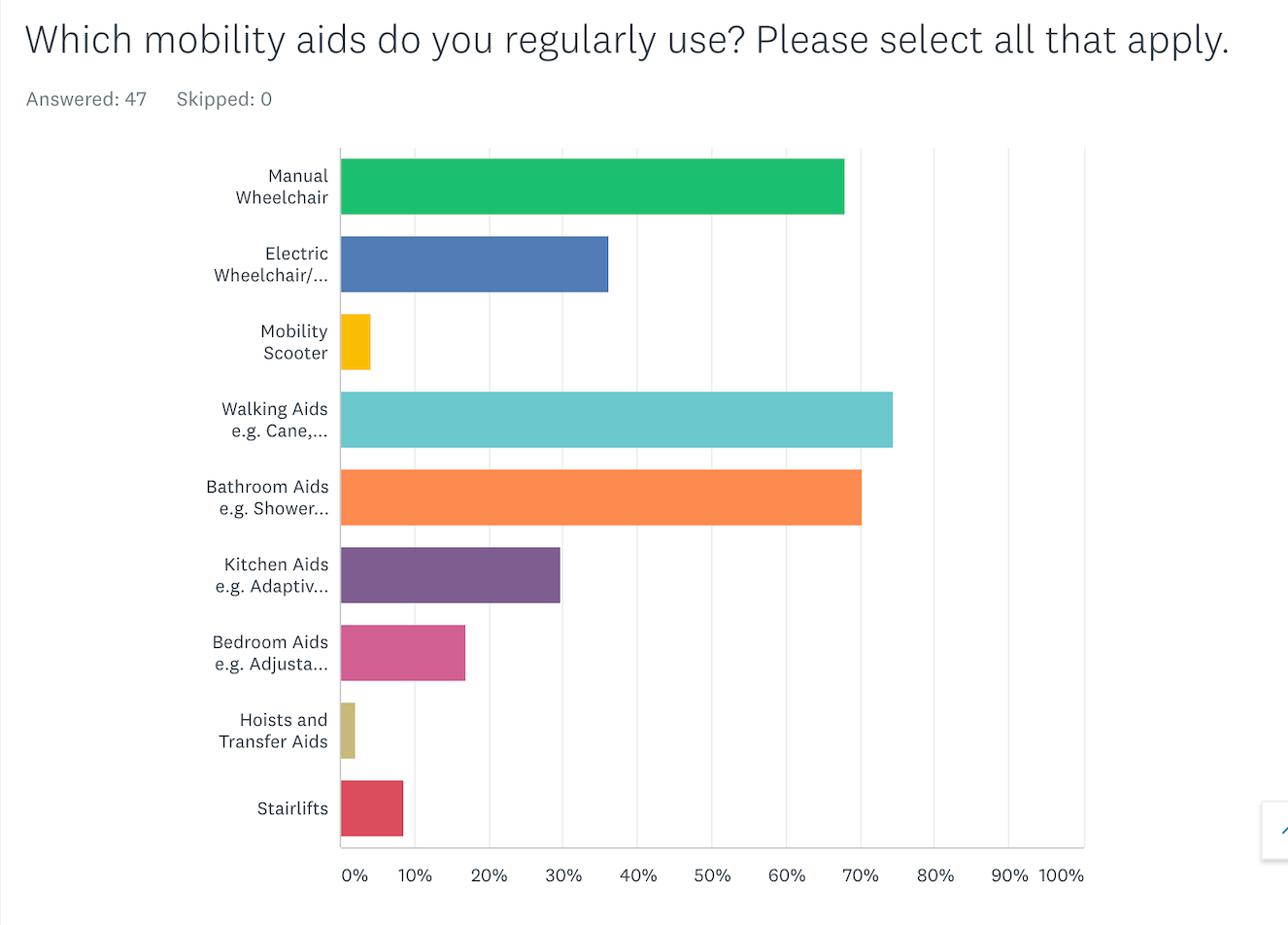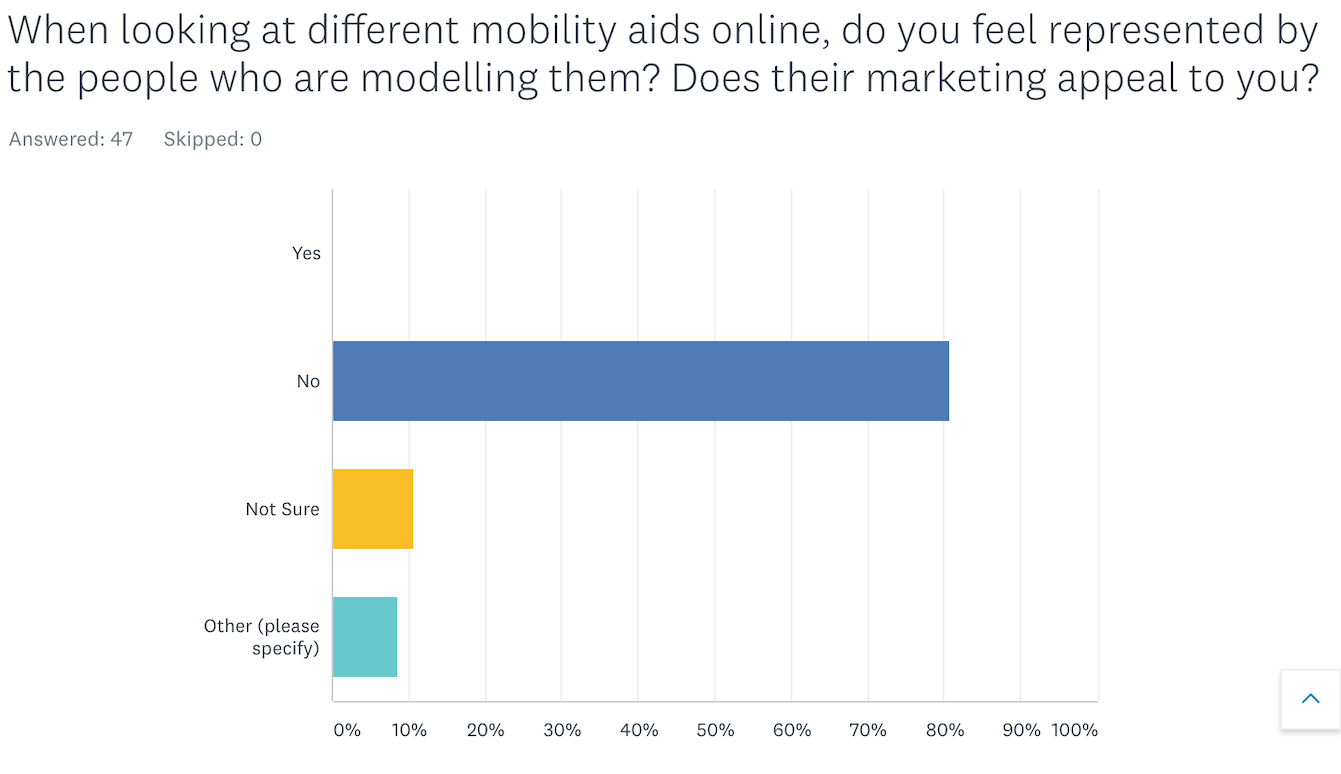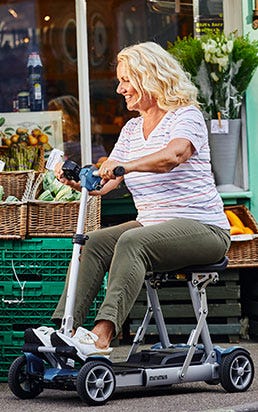Mobility aids-users under the age of 30 were invited to share their own opinions on the topic, and let’s just say the responses provided plenty of food for thought…

I became a power-chair user in 2018. Although I’d previously been using a transit wheelchair, due to difficulties with walking and standing, I’d actually been putting off the idea of upgrading and joining the power-chair club. Even though an electric wheelchair of this kind would be an important tool towards gaining independence and self-reliance, the way these mobility aids are currently marketed seemed to imply otherwise. All through my research into the options available, I’d see these power-chairs, mobility scooters and various other aids modelled almost exclusively by elderly people. No matter where I looked, I couldn’t find one single model who represented me and my own situation as a young adult. As I explained in one of my most popular blog posts to date, it was social media that was my saving grace. Seeing images and videos of my friends and peers using their own mobility aids with style and grace seemed like the antidote for me, the push I needed to reassure me that my situation was valid and that this process was, in fact, ultimately a positive thing. Because of this, when I did acquire my trusty power-chair (who I of course named Janice), I decided to compile a little look-book of some of the people and images who helped me: people modelling their own aids and sharing some of their story, in the hope of helping others to feel less isolated too. Ever since this experience, the marketing of mobility aids has remained a topic of interest to me. I knew I wasn’t alone in my feelings purely from the reaction my blog post received, but to delve a little deeper into the scale of the problem, I recently conducted some market research.
Mobility Aids Market Research
 With 47 respondents in under 24 hours, it’s safe to say that people were keen to voice their views on the topic. Respondents reported using a range of mobility aids on a regular basis: manual wheelchairs and walking aids were reported most frequently, with power-chairs and bathroom aids (such as shower stools) close behind. When asked how they researched different mobility aids ahead of making a purchase, 72% of respondents predictably cited seeking information online and then using online shopping methods. However, somewhat surprisingly, almost as many people (70% of the sample) cited social media as a tool they utilised, by researching or reading about others’ experiences. A further small percentage also reported using social media to ask for recommendations of their own. In a later question, regarding which social media channels respondents frequently use, Instagram was the front runner (96%), closely followed by Facebook, YouTube and Twitter. By comparison, the number of respondents who reported shopping for mobility aids in person, through visiting dedicated shops or talking with others when out and about, was comparatively smaller. To me, this further implies just how much of an influence online marketing can be for this age group, the demographic who’ve essentially grown up with technology, and why it’s so important to get it right.
With 47 respondents in under 24 hours, it’s safe to say that people were keen to voice their views on the topic. Respondents reported using a range of mobility aids on a regular basis: manual wheelchairs and walking aids were reported most frequently, with power-chairs and bathroom aids (such as shower stools) close behind. When asked how they researched different mobility aids ahead of making a purchase, 72% of respondents predictably cited seeking information online and then using online shopping methods. However, somewhat surprisingly, almost as many people (70% of the sample) cited social media as a tool they utilised, by researching or reading about others’ experiences. A further small percentage also reported using social media to ask for recommendations of their own. In a later question, regarding which social media channels respondents frequently use, Instagram was the front runner (96%), closely followed by Facebook, YouTube and Twitter. By comparison, the number of respondents who reported shopping for mobility aids in person, through visiting dedicated shops or talking with others when out and about, was comparatively smaller. To me, this further implies just how much of an influence online marketing can be for this age group, the demographic who’ve essentially grown up with technology, and why it’s so important to get it right.
Feeling Represented
 Next, we consider whether respondents feel represented by the people modelling different mobility aids online, and whether the marketing of such aids appeals to them. And remarkably, not a single person answered ‘yes’ to this question. For 81% of this sample, the answer was a resounding ‘no’. 11% felt unsure, and 8% shared that they sometimes felt represented, depending on the specific brand and mobility aid in question. To delve further into people’s opinions, I then asked what would make people feel better represented in marketing efforts, and any feedback they would like mobility aids marketers to be aware of. Consequently, the further points were raised…
Next, we consider whether respondents feel represented by the people modelling different mobility aids online, and whether the marketing of such aids appeals to them. And remarkably, not a single person answered ‘yes’ to this question. For 81% of this sample, the answer was a resounding ‘no’. 11% felt unsure, and 8% shared that they sometimes felt represented, depending on the specific brand and mobility aid in question. To delve further into people’s opinions, I then asked what would make people feel better represented in marketing efforts, and any feedback they would like mobility aids marketers to be aware of. Consequently, the further points were raised…
- The majority of answers cited frustrations, similar to my own, about the age of models used. People felt that older adults were almost exclusively used to market mobility aids, with this often having an impact on their own confidence levels. One respondent eloquently explains: “I don't want to feel like I'm being treated as a really old person - I want aids that look nice, and that represent who I am better. […] if a product clearly aimed at younger disabled people came up in an advert I would definitely check it out because this is so rare.”
- As well as age, a desire for wider representation was also expressed. Many raised the point that models are almost exclusively white, and that the lack of BAME representation can feel disheartening. Others further elaborated to express a desire for plus-size models, gender non-conforming and non-binary models, and essentially a more representative cohort to better reflect the society we live in, and the fact that anybody can be disabled. As one respondent explains: “I feel that if there was more of a range of marketing and modelling of aids from a wider variety of people it would normalise certain things and make it much less daunting.”
- People felt they would be more likely to trust and purchase a product if they knew the models used were genuinely disabled people themselves. A handful of people expressed an interest in using case studies from the disability community as a marketing method; people sharing their personal stories and experiences with their specific aid, potentially making it easier for the consumer to imagine using it themselves. Furthermore, this method could also be a way of making such marketing inclusive for those with invisible conditions or who are ambulant mobility aids users (rather than requiring them full-time). One respondent shares what would help them: “Someone explaining their story alongside the piece of equipment, whatever it may be. Sounds more personal. A video showing a that piece of equipment instead of just a picture, so that it shows how it works.”
- A final point made, one that particularly resonated with me personally, was a desire for more empowering marketing. The sample wanted to see people embracing their mobility aids as a mark of independence, rather than as something inherently negative or associated with failing health. There is a clear desire for people being shown going about their daily business and living their typical lives… who just happen to use mobility aids. As one respondent elaborates: “This would perhaps help break down some of the social stigma surrounding people who use them as preventative measures and whose conditions may fluctuate. […] it would be nice to see mobility aids being normalised as a positive thing rather than being viewed as a last resort; to show people whose lives have been improved by their aids rather than focusing on their perceived deterioration.”
So, people know what they want: marketing that feels more inclusive, and for perceptions of mobility aids to become more empowering. Potential consumers seem to be waiting for these changes to be made, ready to give their custom once they feel these needs have been met. Making these changes would no doubt be mutually beneficial: not only would consumers feel better represented, but mobility aids organisations would likely enjoy more enquiries and sales as a result. To me, it’s a no-brainer. All that remains to be found out is whether 2020 will be the year we finally see these changes begin to be implemented, and for mobility aids to become more normalised in everyday life… Can you relate to the issues raised in this piece? How would you like to see mobility aids be marketed in years to come? Join the discussion on our Facebook page.


 Price Match Promise
Price Match Promise
 Next day delivery, 7 days a week
Next day delivery, 7 days a week
 Nationwide Showrooms
Nationwide Showrooms
 Rated Excellent
Rated Excellent







